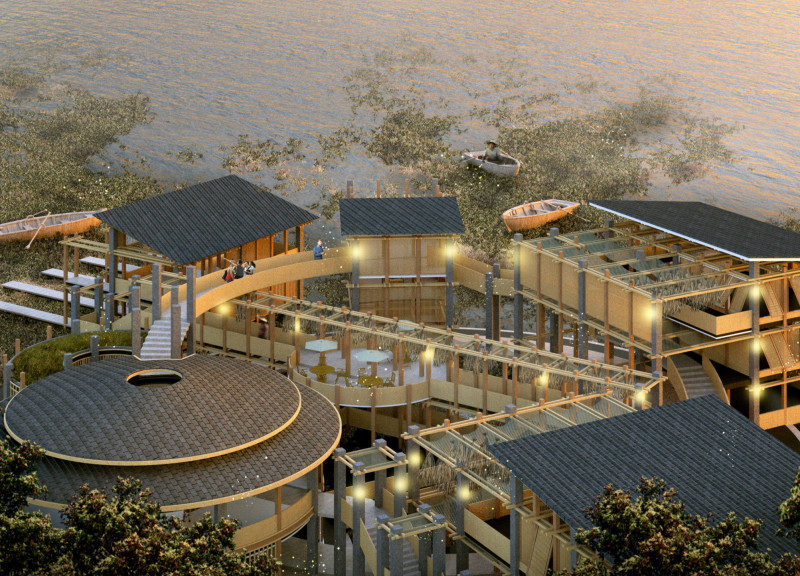5 key facts about this project
The House of Water Hyacinth in Cardona, Rizal, Philippines represents an innovative approach to architecture that addresses both environmental and community challenges. This project is designed as a dual-purpose facility, serving not only as a workspace for local workers engaged in the harvesting of the invasive water hyacinth but also as a tourist attraction that educates visitors about ecological issues and sustainable practices. The architectural design emphasizes collaboration, education, and sustainability while providing functional spaces essential for productivity.
Functional Spaces and Layout
The House of Water Hyacinth features interconnected sections that promote interaction among users, creating a workplace conducive to teamwork and community engagement. The facility includes dedicated areas for harvesting and processing water hyacinth, ensuring that local workers have access to the necessary tools and resources. In addition, the layout incorporates visitor pathways that guide tourists through informative tours, effectively blending educational experiences with the working environment.
A key highlight of the design is the sun-drying infrastructure, which utilizes passive solar design principles to enhance energy efficiency. This feature not only supports the drying process of harvested materials but also minimizes energy consumption, reflecting the project's commitment to sustainability. Further, the use of glass in various elements optimizes natural lighting, fostering a bright and inviting atmosphere within the facility.
Sustainable Material Use
The project places significant emphasis on sustainable materials, which are integral to its design and functionality. Key materials include locally sourced wood, polyethylene, and glass. The incorporation of recycled materials from existing structures not only reduces waste but also connects the facility to the local context. The structural elements predominantly consist of wood, showcasing local craftsmanship while enhancing the aesthetic appeal of the architecture.
The architectural design prioritizes ecological awareness by incorporating features that highlight the interaction with the surrounding landscape. The site's planning integrates water management strategies, ensuring the ecological balance is maintained while providing functional outdoor spaces that support both work and tourism.
The House of Water Hyacinth stands apart from typical architectural projects by merging functionality with ecological responsibility. The integration of educational elements within the working environment fosters community involvement and raises awareness about local environmental challenges. This project advocates for sustainable practices while enriching the lives of local workers and visitors alike.
For those interested in exploring the architectural plans, sections, and designs in greater detail, we encourage you to review the full project presentation for comprehensive insights into its unique architectural ideas and design outcomes.


 Cheenee Ladrido
Cheenee Ladrido 























